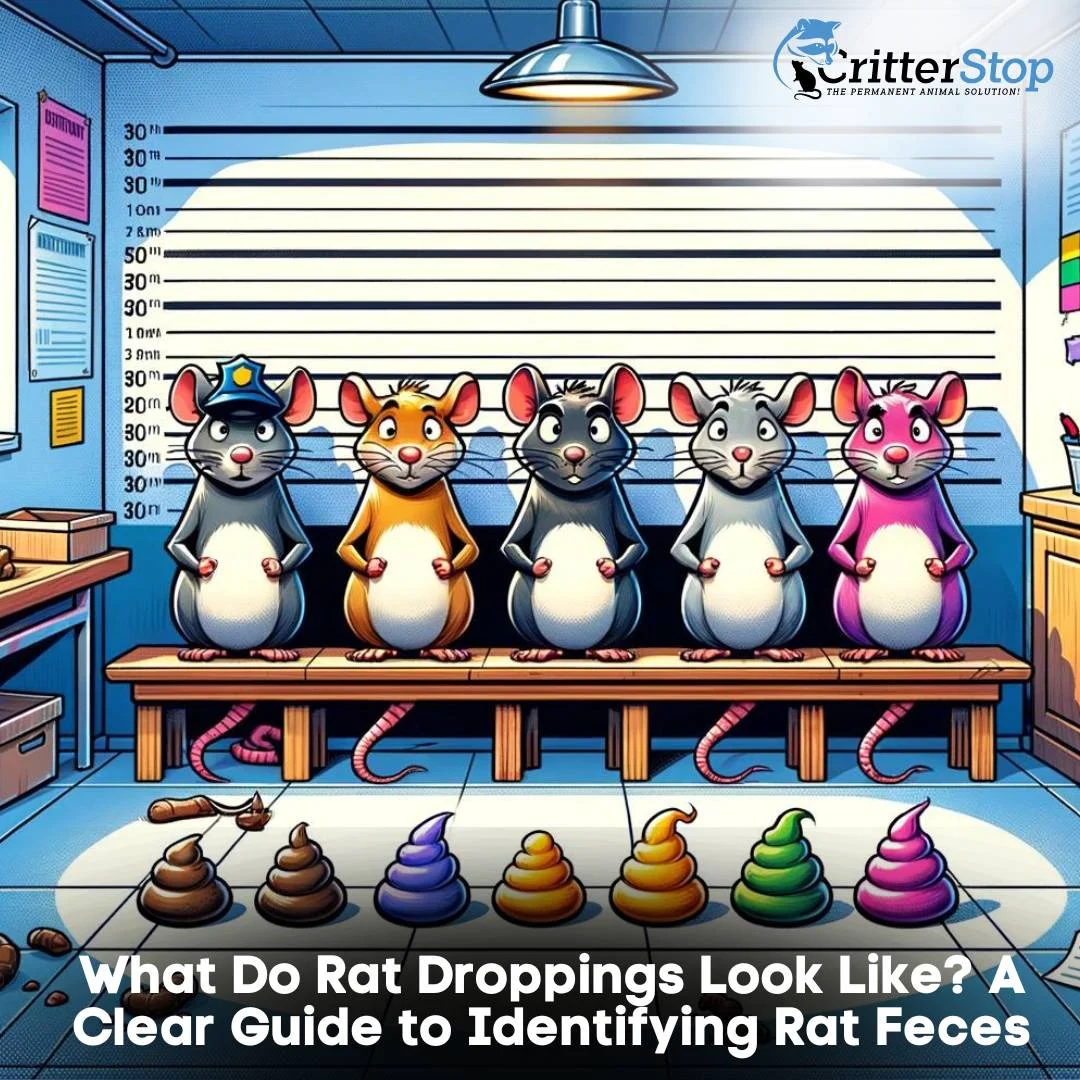
So you wonder, what does rat feces look like? Rats are a common household pest that can cause significant problems, damages and threats to your home, not only for the infrastructure but also to your health, your loved one and even pets. A very clear sign of a rat or mice infestation is the presence of droppings. Identifying rat droppings is crucial in determining the extent of the infestation and taking appropriate measures to eradicate it, so what does rat poop look like?
Rat fecal matter can vary in size, shape, and color depending on the species of rat. Generally, rat droppings are dark brown or black in color, and they’re the size of a rice grain so they’re tiny. They are typically pointed at one end and rounded at the other, with a smooth surface texture. Normally the droppings from these animals are found where they're active, such as near food sources, nesting areas, and along rat runways.
Knowing what rat droppings or rat scats look like can help homeowners and pest control professionals identify rat infestations and take appropriate measures to control them. It is important to handle rat droppings with caution as they can carry harmful bacteria and diseases. If you suspect a rat infestation, it is recommended to seek professional pest control services to ensure safe and effective removal of the rats and their droppings.
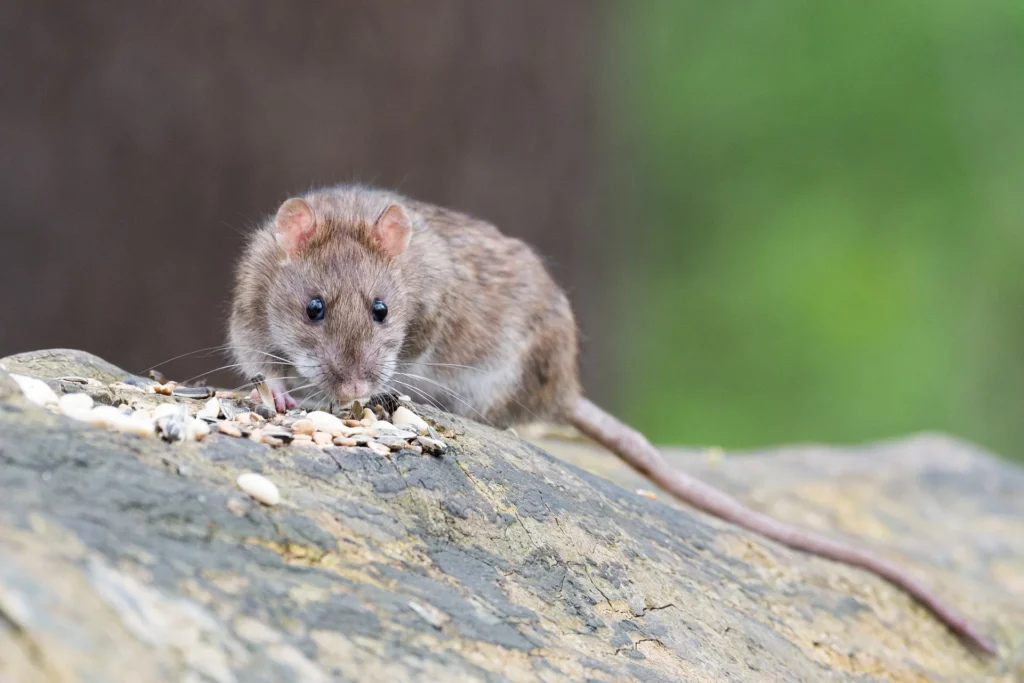
Rat droppings are one of the most common signs of a rat infestation. Identifying rat feces is an important step in determining the extent of the problem and taking appropriate measures to address it. In this section, we will discuss the appearance of rat droppings, including their color, size, and shape.
Rat droppings are usually dark in color, ranging from black to dark brown. Fresh droppings may have a slightly shiny appearance due to the moisture content, but they will quickly dry out and become dull.
The size of rat droppings can vary depending on the size of the rodent. In general, they are about the size of a grain of rice, measuring around 1/2 to 3/4 inches in length. However, larger rats can produce droppings that are up to 1 inch in length.
Rat droppings are generally tapered at both ends, with a slightly curved shape. They are usually smooth and have a uniform texture, with no visible segments or pieces. Unlike dog feces, which can be lumpy or segmented, rat droppings are more cylindrical in shape.
In addition to their appearance, it is important to note that rat droppings can also carry harmful bacteria and viruses, including salmonella and hantavirus.If you're suspicious of rat activity in your house, remember to take the necessary precautions when you’re going to clean the droppings and disinfecting the affected area.
Overall, by being able to identify what rat poop looks like, you can take the necessary steps to address a potential rat problem and protect your home and health.
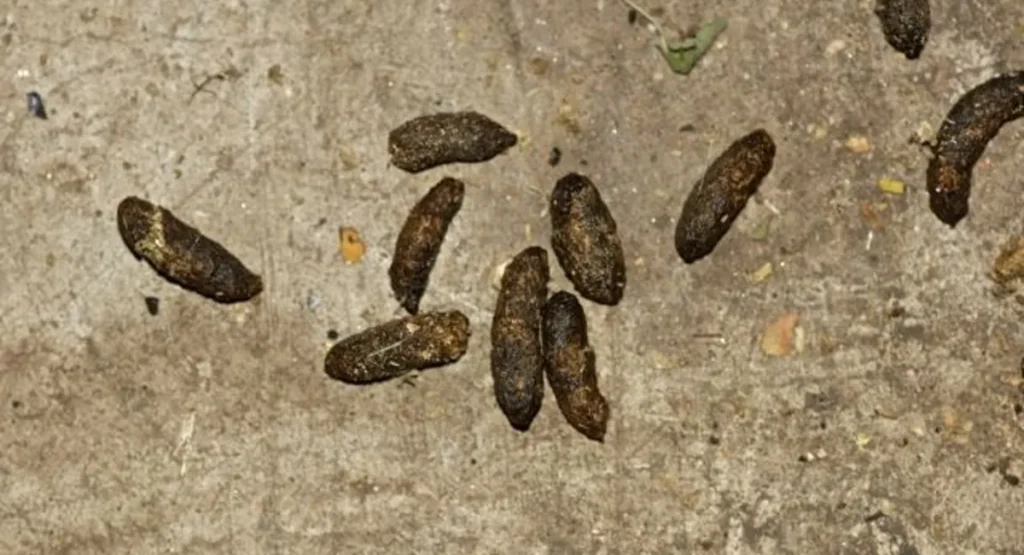
Rat droppings are a clear indication of a rat infestation in a particular area. Knowing how to identify the signs of rat droppings can help people take appropriate measures to control the infestation. Here are some of the signs of rat droppings:
Rats tend to urinate frequently, and their urine has a strong ammonia-like smell. If you notice any strong, unpleasant odors in your home or workplace, it may be an indication of rat urine.
Rats have oily fur that leaves grease spots or marks on whichever part they’re in contact with. These marks may be visible on walls, floors, and baseboards. If you notice any oily stains, it may be an indication of a rat infestation.
Rats leave footprints and tail marks in dusty areas. If you notice any tracks or tail marks in dusty areas, it may be an indication of a rat infestation.
It is important to note that rat droppings can pose a health risk to people. Rat droppings can contain bacteria and other harmful pathogens that can cause diseases. Therefore, it is important to clean up rat droppings as soon as possible. When cleaning up rat droppings, it is recommended to wear gloves and a mask to prevent the spread of bacteria and other harmful pathogens.
In conclusion, identifying the signs of rat droppings is crucial for controlling a rat infestation. By knowing what to look for, people can take appropriate measures to prevent the spread of disease and ensure a safe and healthy environment.
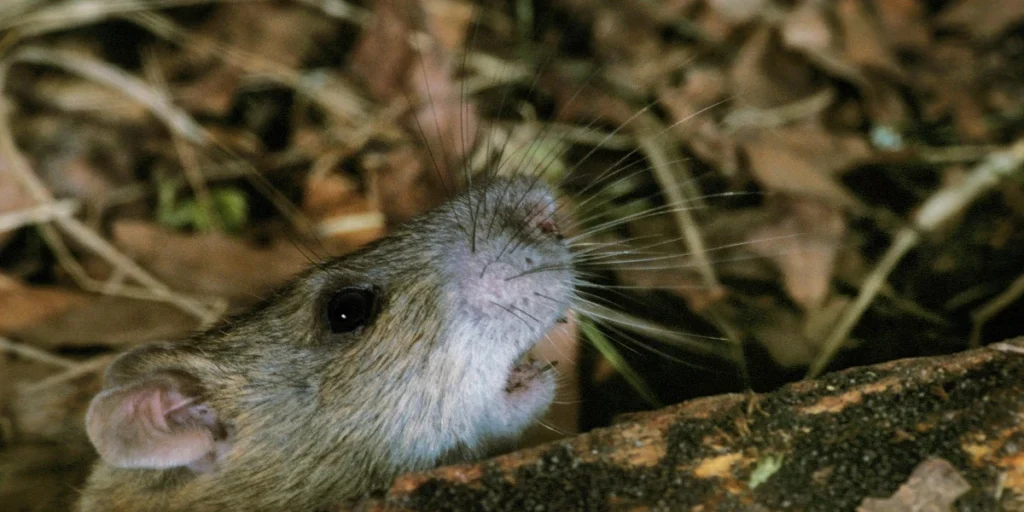
Rat droppings can be found in various areas, both inside and outside of homes. Knowing where to look for rat droppings is crucial in identifying a potential rat infestation. Here are some common areas where rat droppings are found:
Rat droppings are often found in areas where rats have access to food and water. Kitchens, pantries, and food storage areas are common places where rat droppings can be found. Rats may also leave droppings in areas where they hide, such as behind appliances or in cabinets.
Rats are attracted to garbage cans and may leave droppings nearby. Note that leaving the garbage bins sealed will prevent rats from accessing them. If rat droppings are found near garbage cans, it is a sign that rats may be present in the area.
Rats may enter attics through small openings and leave droppings behind. Attics provide rats with a warm and dry place to nest, making them a common area for rat infestations. If rat droppings are found in the attic, it is important to take action to prevent further infestation.
When rat droppings are found, it is important to take precautions to avoid and prevent any bacteria or diseases, since they’re carriers of multiple ones, this can help prevent. Cleaning up rat droppings should be done with caution, using gloves and a mask to prevent inhaling dust. Bleach should be used to clean surfaces where rat droppings are found.
Overall, knowing where to look for rat droppings is an important step in identifying a potential rat infestation and taking action to prevent it. If rat droppings are found, it is important to contact a pest control professional to address the issue.
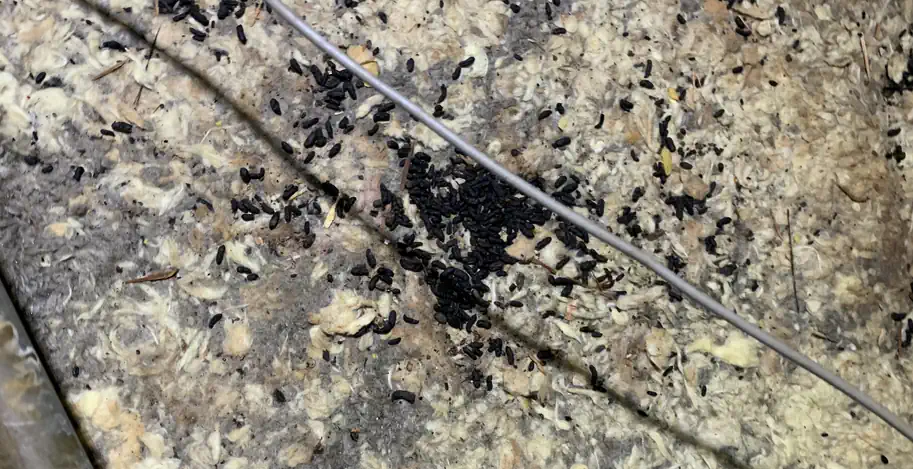
Rat droppings can pose serious health risks to people, especially if they are not cleaned up properly. In the next part of the blog, we will provide you with some of the diseases and health risks associated with rat droppings.
Salmonella is a type of bacterium that can be found in rat droppings. If people come into contact with rat droppings that are contaminated with Salmonella, they can become sick. Some of the symptoms that you can experience when infected are diarrhea, fever and abdominal cramps. In severe cases, Salmonella infection can be life-threatening.
Leptospirosis can be infected in humans, since it{s form of infection is through contact with rat urine or droppings. Symptoms of leptospirosis can include fever, headache, muscle aches, and vomiting. In severe cases, leptospirosis can cause liver and kidney failure, which can be life-threatening.
Hantavirus is a virus found in urine, saliva, and rat droppings. You can infect yourself by inhaling the virus when they come into contact with rat droppings or dust that contains rat droppings. Some of the symptoms include muscle aches, fever and shortness of breath. In severe cases, hantavirus infection can be fatal.
It is important to note that rat droppings can also attract other pests, such as flies and cockroaches, which can further increase the risk of disease transmission. To reduce the risk of disease transmission, it is important to clean up rat droppings as soon as possible. When cleaning up rat droppings, it is important to wear gloves and a mask to protect against the spread of disease. Rat droppings should be cleaned up using a bleach solution, and any contaminated surfaces should be thoroughly disinfected.

Having your house clean all the time is the main step into preventing a rat infestation. Regularly cleaning up food crumbs, spills, and other messes can help eliminate potential food sources for rats. It is also important to dispose of garbage properly and keep it in sealed containers.
In addition to keeping a clean home, it is important to eliminate any potential food sources for rats. This can include storing food in sealed containers, cleaning up pet food and water bowls, and removing any bird feeders or other sources of outdoor food.
Cracks on the walls, floors or sealing is an entry to rat infestation so keep them sealed at all times and foundation of a home can help prevent rats from entering. It is also important to seal up any gaps around doors and windows, and to make sure that all vents and chimneys are properly covered.
By following these prevention tips, individuals can greatly reduce their risk of a rat infestation. It is important to remember that rats can be dangerous and carry disease, so it is crucial to take the necessary precautions to keep them out of your property. If an infestation does occur, it is recommended to get in contact with a pest control company or professional, so that they can help you remove the rats effectively. Additionally, cleaning up rat droppings should be done carefully and with protective gear, as the droppings can contain dangerous bacterium and dust. Using bleach and other cleaning products can help kill any potential germs and bacteria left behind.
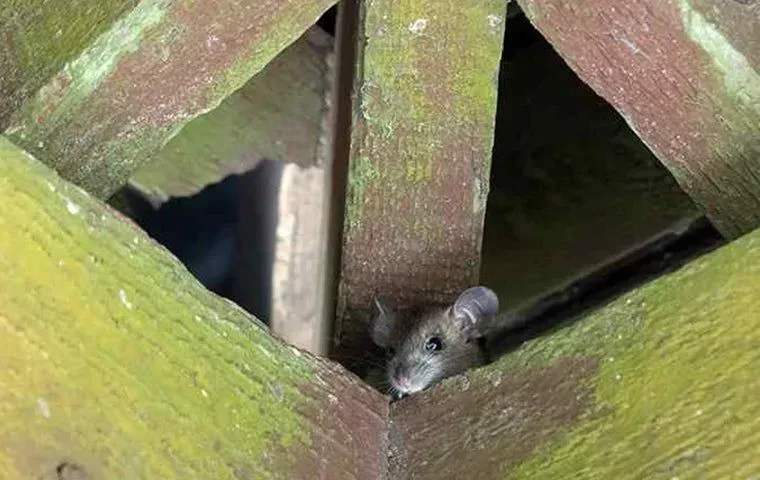
In summary, rat droppings are small, oval-shaped pellets that are typically dark brown or black in color. They can be found near areas where rats have been active, such as in kitchens, pantries, and storage areas. Rat droppings can vary in size depending on the size of the rat, but they are generally about the size of a grain of rice.
Rat droppings can pose a serious health risk to people, as they can carry a variety of dangerous diseases and bacteria. These include salmonella, hantavirus, and leptospirosis. Inhaling dust from rat droppings can also lead to respiratory system issues, especially for people that suffer asthma or other medical conditions similar to these, remember always to check in with your medical professional.
To prevent rat infestations and the associated health risks, being safe and keeping rats or mice out of you home is the fundamental step into your safety. This includes sealing up any holes or gaps in your walls or foundation, keeping food stored in airtight containers, regularly clean any spills or crumbs left. If you do find rat droppings in your home, it is important to clean them up promptly and thoroughly using gloves and a disinfectant such as bleach.
Overall, rat droppings may seem like a small problem, but they can pose a serious danger to both your health and your home. By taking steps to prevent rat infestations and promptly cleaning up any droppings you find, you can help keep your home safe and healthy.
Rat droppings are generally larger than those of a mouse, with a length of about 1/2 inch to 3/4 inch and a width of about 1/4 inch. They are also more tapered at the ends and have a darker color than mouse droppings.
Rat droppings can pose serious health risks to humans, such as causing infection and diseases like Hantavirus, Salmonella or Leptospirosis. These diseases can be transmitted through contact with contaminated droppings or through the air when droppings are disturbed.
Fresh rat droppings are dark and moist, while older droppings are dry and crumbly. If they are fresh, normally they will be soft to the touch and leave a smear when pressed.
If you find rat dropping in your home, it's important to take immediate action, to avoid an infestation, look up for entry points or cracks in your home, and call a professional critter company to help you seal these, also remember to take necessary safety precautions to keep you and your loved ones safe.
Rat feces typically resemble small, dark pellets, similar in size and shape to grains of rice. They are usually tapered at the ends and have a smooth texture. Fresh rat droppings are dark brown or black in color, but they can lighten over time as they dry out. The size of rat droppings can vary depending on the size and species of the rat.
While the consistency of rat droppings can vary depending on their age and diet, they are generally smooth and moist when fresh and dry and crumbly when old.
Common items that are often mistaken for rat droppings include seeds, small rocks, and insect droppings. It is important to properly identify droppings to ensure appropriate action is taken to address any potential infestation.
Problems with rats? Don't worry at Critter Stop, we can assist you to help them get to safety and not disturb your home and dreams, Contact Us or Call us at: (214) 234-2616 so one of our team members can gladly assist you and provide you with the proper consultation.
Visit our Critter Library and learn more about our furry friends